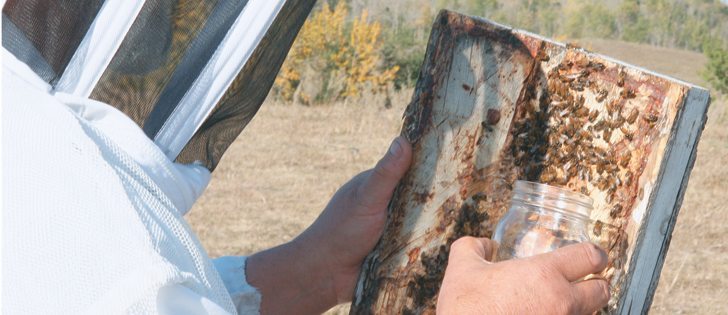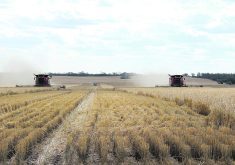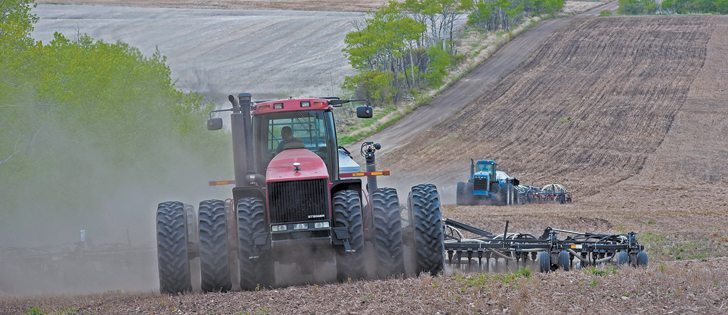Prairie farmers urged to take note | Farmers in Ontario will have to take a management course and justify neonic use
An Ontario canola grower says western Canadian farmers shouldn’t ignore new seed treatment regulations in his province because the decision to cut neonicotinoid use by 80 percent will affect farmers across the country.
The Ontario government unveiled proposed regulations last week to curtail the use of neonicotinoids on corn and soybean seeds.
Starting in 2016, an Ontario farmer who wants to buy and use neonicotinoid seed treatments will have to take an integrated pest management (IPM) course, prove he is implementing IPM strategies and demonstrate that insect pressure on his farm is high enough to justify the use of neonics.
Read Also

Farming Smarter receives financial boost from Alberta government for potato research
Farming Smarter near Lethbridge got a boost to its research equipment, thanks to the Alberta government’s increase in funding for research associations.
Ontario’s environment minister said the regulations are needed because neonic insecticides are endangering pollinators and are a threat to Canada’s ecosystem.
“It is possible for neonicotinoids to run off from fields to nearby water bodies where they can cause harm to aquatic insects and affect the animals that feed on those insects,” the province said in a news release.
“With this growing information, we are taking precautionary steps to reduce neonicotinoid-treated seed in Ontario.
Craig Reid, who operates a mixed farm near Chesley, Ont., and is vice-president of Ontario Canola Growers, said the province’s policy sounds a lot like the precautionary principle.
“If you apply the precautionary principle completely, you make no forward progress on anything,” he said.
“This has the potential to jeopardize not only Ontario but Canada’s position as a sound, science-based regulatory jurisdiction…. The impacts of this type of move goes beyond the borders of Ontario. It has the potential to impact the business environment in the rest of the country.”
Dave Baute, president of the Canadian Seed Trade Association, said he isn’t worried about the registration of new agriculture technologies in Canada, but he is concerned that public opinion will sway future government policies on agricultural practices.
“The political clout of that uninformed public and the opportunistic politics that are in play in Ontario … it’s a slippery slope,” said Baute, who runs Maizex Seeds in Tilbury, Ont.
“The sad truth is there is no science that supports the kind of knee-jerk reaction that the province is taking (on neonics).”
Ontario Canola Growers and Grain Farmers of Ontario are among the groups that have responded to the province’s seed treatment policy by founding Farm Action Now.
Reid said Farm Action Now will lobby for rational and science-based agricultural policies.
“We’re going to try and impact the people that are interpreting the public’s will and turning that into policy,” he said.
“Our target and our focus is going to be on the policy maker: your senior bureaucrats and elected officials.”
Baute said Canadian farmers and the agricultural industry cannot be complacent about the power and influence of special interest groups. Organizations such as the Sierra Club of Canada and the David Suzuki Foundation conducted an effective campaign against neonics.
Baute said this case will “embolden” their confidence and they will challenge other agricultural practices in Canada.
Baute said the neonic regulations in Ontario create an unnecessary burden for the province’s seed industry and threaten the economics of growing corn and soybeans in Central Canada.
“We can’t make money if our customers don’t,” he said.
“They (farmers) are going to be in a bad position to compete with cheaper cost goods, like corn produced in other jurisdictions.”
Baute was prepared for changes to seed treatment rules because the Ontario government said it planned to limit neonic use in July. However, the final decision was a shock.
“This goes beyond a worst case scenario, in my opinion…. It undermines the profitability and viability… of the seed industry in Ontario,” he said.
“It throws the responsibility and cost to implement this … in the lap of businesses like mine. It’s a total distraction, it’s extremely expensive and totally unmerited…. I’ve been in business 30 years I’ve never had to face something this ugly.”
robert.arnason@producer.com


















